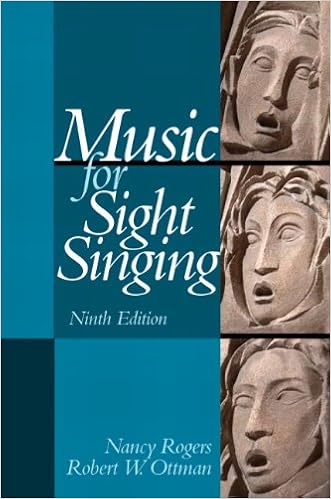
Description
Review “The carefully graded nature of the examples makes it appropriate for all four semesters of our course sequence and. [The text] meets our need well and has stood the test of time.” - Robert Mills, Liberty University “ The most significant challenge facing the students is developing the skills and abilities quickly enough to maintain pace with the curriculum. I believe it is more of a time issue (lack of practice time, or student choice to avoid practice) than a curriculum pacing issue. This text responds very nicely to this challenge; we have the freedom to set the pace as needed to sufficiently challenge, but not overwhelm, the student population.” - William Harbinson, Appalachian State University “The most important feature of any aural skills and sight-singing book is that it includes real musical examples. For this alone, Music for Sight Singing is indispensable.” - Jill T. Brasky, University of South Florida “The sequence is logical. Progression from quarter to other note values is excellent. It is a great introduction to rhythms, one step at a time.” - James Hutching, Carl Sandburg College About the Author Nancy Rogers is an Associate Professor of Music Theory at Florida State University. With research interests including music cognition and its pedagogical implications, Dr. Rogers has presented papers at national and international conferences, including meetings of the Society for Music Theory, the Society for Music Perception and Cognition, the International Conference on Music Perception and Cognition, and the Conference on Interdisciplinary Musicology. She was a keynote speaker at the 2009 Musical Ear conference held at Indiana University. Several recent publications may be found in Music Theory Online , the Journal of Music Theory Pedagogy , and Em Pauta . Professor Rogers received her Ph.D. in music theory from the Eastman School of Music; she is a Mellon Fellow in the Humanities. She has served as President of Music Theory Southeast, Secretary of the Society for Music Theory, and Treasurer of Music Theory Midwest. Before coming to Florida State University, she served on the faculties of Northwestern University, the University of Iowa, and Lawrence University.
Features & Highlights
- The most engaging and musical Sight-Singing text on the market.
- Music for Sight Singing
- is structured around organized melodiesdrawn from the literature of composed music and a wide range of the world’s folk music.
- Real
- music exercises allow readers to practice sight singing and develop their “mind’s ear” – the ability to imagine how music sounds without first playing it on an instrument.
- The ninth edition continues to introduce a host of important musical considerations beyond pitch and rhythm- including dynamics, accents, articulations, slurs, repeat signs, and tempo markings. The book’s arrangement of simple to complex exercises lays the foundations for success.
- Learning Goals
- Upon completing this book, readers will be able to:
- Fluently read rhythms in simple and compound meters, including those in relatively unusual, irregular, or changing meter signatures.
- Fluently read rhythms in simple and compound meters, including those in relatively unusual, irregular, or changing meter signatures.
- Sight sing melodies in any major or minor key, and in any diatonic mode.
- Sight sing melodies in any major or minor key, and in any diatonic mode.
- Effortlessly read all four common clefs.
- Effortlessly read all four common clefs.
- Understand common musical symbols and terms.
- Understand common musical symbols and terms.
- Recognize and sing important harmonic features such as dominant seventh and Neapolitan chords.
- Recognize and sing important harmonic features such as dominant seventh and Neapolitan chords.
- Improvise effectively from a variety of background structures such as a harmonic progression or an underlying contrapuntal framework.
- Improvise effectively from a variety of background structures such as a harmonic progression or an underlying contrapuntal framework.
- Negotiate chromatic passages from simple embellishing tones and tonicizations to modulations to post-tonal music.
- Negotiate chromatic passages from simple embellishing tones and tonicizations to modulations to post-tonal music.
- NOTE:
- MySearchLab does not come automatically packaged with this text. To purchase the text with MySearchLab, order the package ISBN:
- 020595524X / 9780205955244 Music for Sight Singing Plus MySearchLab with eText -- Access Card Package
- Package consists of:
- 0205938337 / 9780205938339 Music for Sight Singing
- 0205955053 / 9780205955053 MySearchLab with Pearson eText -- Valuepack Access Card -- for Music for Sight Singing





